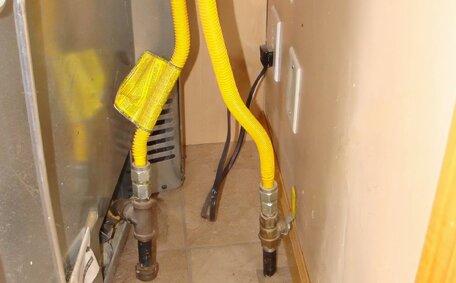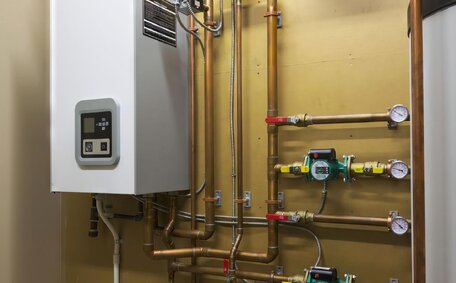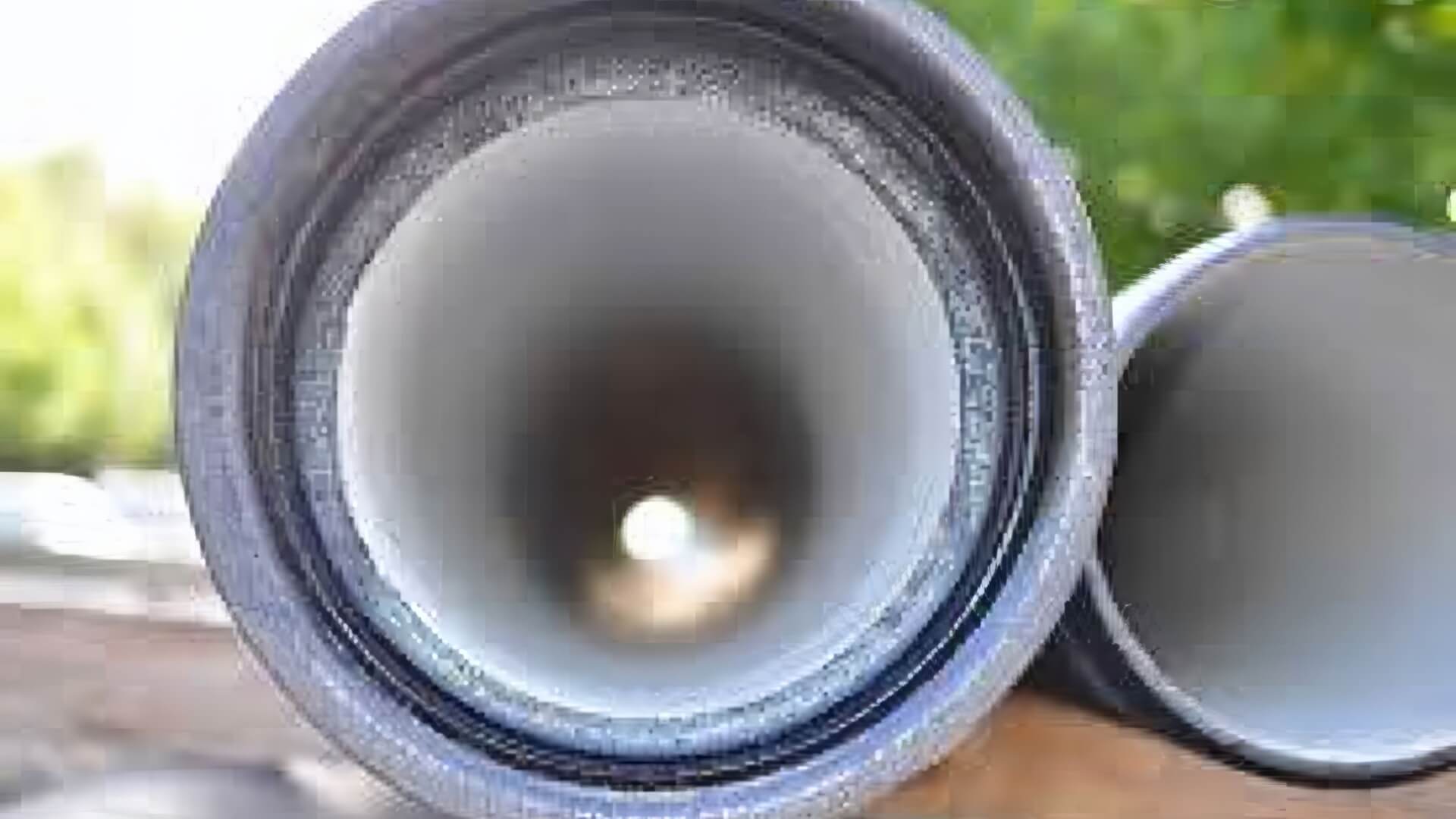
Keep Updated on Gas Appliance Recalls
Consumers should maintain awareness of current gas appliance recalls and safety alerts to prevent injuries. Check recall lists regularly to protect your home and family.
Read MoreDiffering from conventional units, tankless water heaters provide hot water when needed, negating the necessity for a storage tank.
They employ advanced heating methods to warm water as it travels through the system, offering an endless supply of hot water instantaneously. Tankless water heaters, also known as ondemand hot or instantaneous water heaters, have been gaining popularity in households looking to upgrade their water heating system.
Tankless water heaters are notably energy efficient, offering numerous benefits.
Tankless models can cut energy expenses by up to 30%, thanks to eliminating the standby heat losses inherent in storage tanks. They also have a space-saving compact design that doesn’t take up much room and often last up to twice as long as conventional storage tank units.
In assessing if a tankless water heater or other system is suitable for your household, consider your daily hot water use and required flow rates.
It’s important to note that tankless heaters may have limited flow rates during simultaneous use of multiple water outlets. Evaluate the potential energy savings and longevity benefits of tankless models against the likelihood of higher initial costs and possible flow rate limitations.
Tankless heaters rapidly warm cold water as it passes through the unit’s heat exchanger. Cold inlet water enters the heater and flows across a heat exchanger that contains a pilot light and gas or electric heating elements. These units, sometimes using a heat pump instead of natural gas, rapidly escalate the temperature of the water to the designated output level before its departure from the heater.
The process of instant on-demand heating is unique, as there’s no need to constantly keep stored water hot. Tankless models do not store or reheat a tank of water, thereby eliminating standby heat loss. Functioning as efficient demand heaters, they warm water quicker than traditional tanks, aiding in energy bill savings.
Responding instantaneously to hot water demand, tankless heaters supply constant hot water, eradicating the heat loss linked to stored water.
The new hot water solutions provided by tankless units are significantly more energy-efficient. Gas tankless water heaters are more efficient and can effectively reduce household energy consumption related to water heating by 30% or more. This saves significantly on energy bills over time.
Summarising, a tankless hot water system ensures a steady dispatch of warm water as needed, all while conserving energy that would otherwise heat water in dormant storage. This allows them to be a compact, durable and sustainable water heating solution for households.
A tankless system delivers instant hot water for any task, without the fear of depleting your supply.
As water flows through unit, it is heated instantaneously by the heating elements. The main benefit of tankless water heaters is their ability to deliver a continuous, endless supply of hot water.
Tankless water heaters are a prudent investment, operating with up to 30% less energy than traditional hot water systems. Over time, this results in considerable household energy bill savings. Without standby heat losses and with better insulation, tankless heaters result in lower emissions, promoting environmental friendliness.
With fewer components and absent corrosion concerns, tankless heaters often exceed a 20-year lifespan, surpassing conventional systems’ durability. Such an extended operating life ensures a considerable return on the initial investment over time.
When it comes to continuous hot water on demand, energy efficiency and longevity, tankless water heaters deliver excellent household benefits. Just be sure to analyse your daily usage and flow rate needs to choose the right size unit for your home.
One of the biggest advantages of tankless water heaters, despite a higher initial cost, is their ability to deliver a continuous, endless supply of hot water on demand. As soon as you turn on the hot water tap, fresh water flows through the heat exchanger and is heated instantly by the gas or electric elements inside the unit.
This means that tankless heaters more effectively meet the hot water demands of consecutive showers, baths, sink use and other household needs without ever running out. Because the supply isn’t depleted, there is no need to carefully plan hot water use.
The consistent flow adapts well to larger households with simultaneous hot water needs. Whether it’s running multiple loads of laundry, taking long showers, or operating the dishwasher, tankless units can handle the demand thanks to their instant and efficient water heating system.
In essence, by eliminating a storage tank and heating water directly on demand, tankless models provide an unlimited hot water supply perfect for households with greater need.
Switching from a storage unit to a tankless water heater can offer substantial energy and cost savings, one of the system’s major advantages. Tankless models are much more energy-efficient, using up to 30-50% less energy compared to conventional storage tank water heaters.
This is because tankless heaters only heat water on demand, eliminating standby heat losses associated with keeping a tank of water constantly hot. Instantly heating only the necessary water, the system doesn’t waste energy on unused hot water.
Over the lifetime of the system, these energy savings really add up. Adopting a tankless system can lead to annual utilities savings of $100 or more. This leads to excellent return on your initial investment over time.
Tankless water heaters also have a lifespan of up to 20 years, focusing on heating your necessary water only and nearly double that of traditional systems. Exceptional longevity coupled with continuous energy savings makes tankless heaters a cost-effective choice in the long term.
One of the key benefits of a tankless water heater is its exceptional longevity, ensuring you never run out of hot water, compared to traditional storage tank models. While most standard hot water tanks last only 8-12 years, the average lifespan of a tankless system is 20 years or more.
This extended lifespan is thanks to the simpler inner workings and lack of a water storage tank. Fewer components and moving parts translate to reduced wear over time. Tankless models also eliminate tank corrosion issues that can lead to early replacement in conventional heaters.
The 20+ year operating life means you’ll get excellent value for your initial investment with a tankless unit. Rather than needing frequent water heater replacements, a single tankless model can serve your household’s needs for decades. This results in significant long-term savings and decreased inconvenience.
Tankless water heaters surpass traditional systems, offering longevity that meets contemporary household demands. With the right unit sized for your home’s typical demand, you can benefit from an endless hot water supply and exceptional durability for 20 years or beyond.
Although tankless water heaters are known to economise over the years, their upfront cost is often steeper compared to classic storage tank alternatives. Installation costs are also greater due to potential electrical upgrades or gas line modifications needed to meet the system’s energy demands.
Unlike storage water heaters, tankless heaters provide a constant supply of hot water, but the output temperature can fluctuate during periods of heavy water flow or very cold inlet temperatures. Users may need to adapt to minor variations in shower water temperatures.
Most tankless models have a maximum heat output capacity between 5-9 gallons per minute (19-34 litres per minute). Running multiple water outlets simultaneously can strain the system, leading to lukewarm temperatures.
When reviewing the benefits, also consider the pros cons tankless water heaters may have to fully understand what to expect from these units. Choosing the correct size and adapting to any temperature shifts can mitigate these system limitations.
One potential drawback of tankless water heaters is that they tend to have a higher upfront purchase and installation cost compared to traditional storage tank models. The tankless unit itself can cost anywhere from $800 to $3500 depending on the fuel type, capacity, and features.
Tankless water heaters may also incur supplementary installation costs. For gas water systems, new gas lines or metre upgrades may be required to meet the higher energy demands. For electric models, you may need upgraded electrical panels, wiring, and dedicated circuits to handle the electrical load.
While initial costs are higher, gas tankless water heaters can become cost-effective through enhanced energy efficiency and utility bill savings. Given that energy prices tend to rise, the value of long-term savings is likely to grow.
One minor drawback reported by some tankless water heater users is fluctuating hot water temperatures during periods of high demand. When multiple showers, sinks, appliances, etc. are drawing hot water simultaneously, the temperature may temporarily dip until the flow reduces.
While usually only a small variation of a few degrees, the change can be noticeable when showering. It simply takes some minor getting used to. Ensuring your unit is properly sized to handle typical peak demand can prevent major temperature dips.
Tankless models available now include advanced temperature control to minimise fluctuations, unlike conventional water heaters with more stable but limited supply. Certain models enable precise temperature settings, while others adjust slightly to ensure a steady output.
So while small inconsistencies can occasionally occur, preference for a constant hot water flow generally outweighs rare and brief temperature changes.
One limitation of tankless water heaters is that most residential models have a maximum hot water flow rate capacity between 5-9 gallons per minute (19-34 litres per minute). This equates to around 1-2 showers able to run simultaneously.
Exceeding the hot water flow capacity can result in a reduced output temperature, preventing situations where you run out hot water during power fluctuations. The water may become lukewarm as the unit struggles to instantly reheat colder inlet temperatures at high flow rates.
For larger households with greater simultaneous demand, multiple tankless units can be combined to increase capacity, ensuring no one will run out of hot water. Alternatively, some commercial and industrial models offer higher flow rates above 9 GPM (34 LPM) to meet greater need.
As long as usage aligns with the unit’s flow rate specifications, heat output limitations should not be an issue. Proper sizing as per your household’s typical peak demand enables a continuous hot water supply.
When selecting a tankless water heater, a major decision is whether to choose a gas or electric model. Gas tankless heaters, often more powerful than electric tankstyle water heaters, can better meet high demand situations with multiple simultaneous hot water draws.
However, tankless gas heaters offer greater installation flexibility and have higher overall energy efficiency. Consider your home’s existing gas and electrical infrastructure when deciding.
Choosing the right-sized tankless water heater that’s right for your household is crucial to meet your water usage needs. Units range from small under-sink models up to whole-home systems able to supply entire households. It’s important to choose the right sized tankless water heater to meet your household’s typical demand. Getting the right size for your unit ensures optimal energy efficiency and performance.
When choosing between a gas or electric tankless water heater, there are several key factors to consider:
In summary, gas tankless heaters suit higher demand households with existing gas connections. Electric models offer greater siting flexibility and energy efficiency capabilities.
Choosing the appropriately sized tankless water heater is crucial to meet your household’s hot water requirements. Consider factors like the number of bathrooms, residents, and simultaneous usage needs to determine the necessary flow rate capacity.
A 3-4 person household with 2 bathrooms will typically need a gas tankless heater with a flow rate of around 6-7 gallons per minute (22-26 litres per minute). This allows for 1-2 showers running simultaneously while meeting other hot water needs.
Tankless heaters can help cater to a variety of needs, ranging from small 2 gallon per minute models designed for individual uses like a sink up to whole home systems with 9+ GPM (34+ LPM) capacity. Select too small of a unit and you risk insufficient hot water during peak demand. Too large wastes energy when oversized for your typical usage.
Also consider existing gas lines or electrical infrastructure when choosing between gas versus electric models. This ensures your home can meet the system’s energy requirements.
With appropriate sizing selection and infrastructure in place, a tankless water heater can efficiently satisfy household demand with a continuous flow of hot water.
Installing a tankless water heater requires careful planning and preparation to ensure your home’s infrastructure can support the system. We highly recommend having a professional plumber complete the installation.
For gas tankless heaters, your existing gas supply lines and gas metre must be assessed to handle the higher energy input compared to hot water tank heaters. Upgrades to piping, a larger gas line, or gas metre may be needed to accommodate the gas flow rate.
Electric tankless heaters, which heats water without the need for a storage tank, also have high power requirements. Your electrical panel must have sufficient amperage capacity and the appropriate wire gauge to deliver ample power to the heater. Fully dedicated 40, 50 or even 60 amp circuits are often recommended, which may require new wiring or panel upgrades.
During installation, it’s crucial to ensure accurate water temperature control, and the unit will need to be properly vented with water lines including isolation valves and bypass loops. Careful temperature and flow adjustments must also be made. Getting all this right at the outset ensures optimal performance and safety.
When comes to enhancements more than a conventional storage tank water heater, a flawless tankless system installation will ensure an unending hot water supply for your home.
When deciding if a tankless water heater is the right choice for your home, there are several key factors to consider:
Understanding what you need to decide before making an informed choice will help determine if a tankless water heater aligns with your household’s requirements. For personalised advice on whether a water tankless heater is right for you, contact our team at Werrington Plumbing on 1300 349 338.
Consumers should maintain awareness of current gas appliance recalls and safety alerts to prevent injuries. Check recall lists regularly to protect your home and family.
Read MoreHard water leaves mineral deposits in hot water heaters and systems, causing corrosion and limescale buildup. This reduces efficiency and leads to higher energy bills and repair costs over time. Installing a water softener protects hot water appliances by removing the minerals that cause scale.
Read MoreYes, pipes can be relined more than once if they become damaged again. Our pipe relining service uses epoxy resin to coat the inside of your existing pipes, repairing cracks and damage for over 50 years. As experts, we’ll have your pipes relined in just one day with no digging required.
Read MoreWerrington, 2747 NSW
We will call back as soon as possible.




